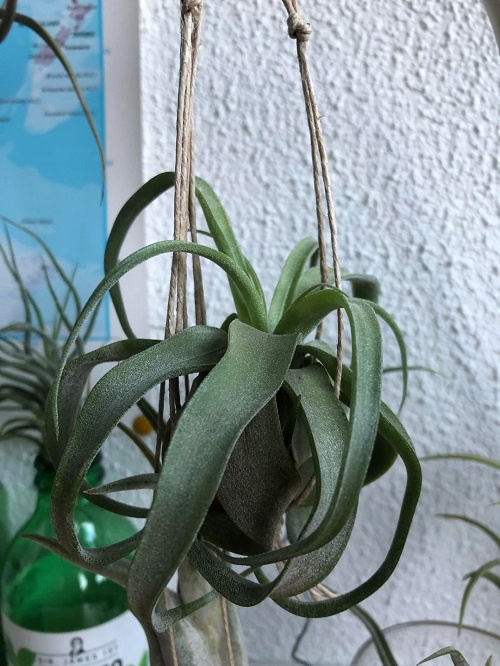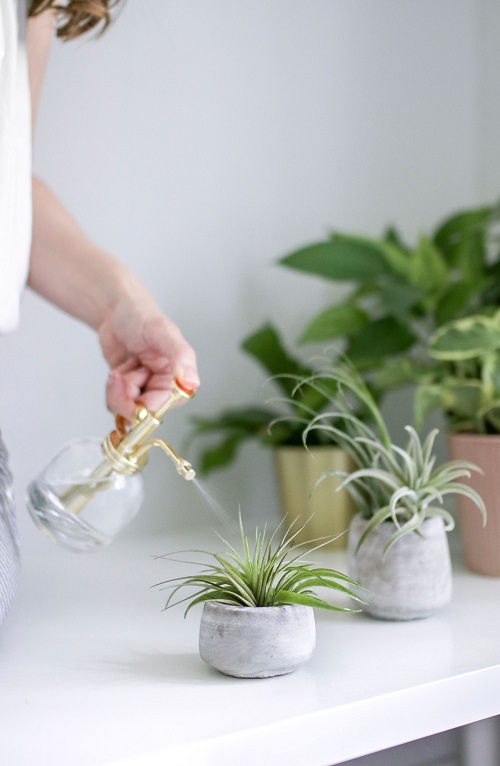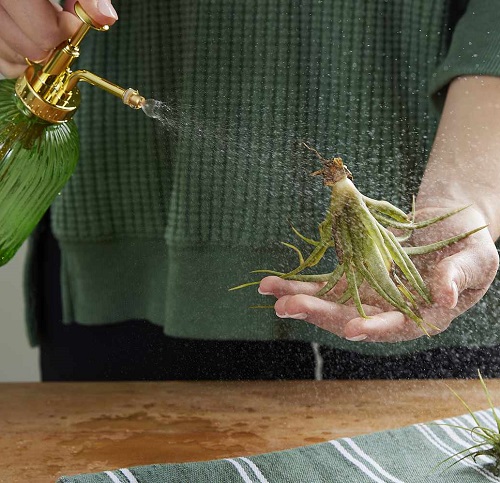Twists and curls are desirable in hair, movies, and flexibility, not in air plants! Identify the root cause and learn how to fix it.
Air plants are known for their soilless growth and unique form. But if you happen to spot the leaves of your plant curling or twisting, it is often an indication of stress or undesirable environmental factors. Let’s take a deep dive into this and find out why this occurs and how to reverse it.
Reasons Air Plant Leaves Curl or Twist
1. Improper Sunlight Exposure
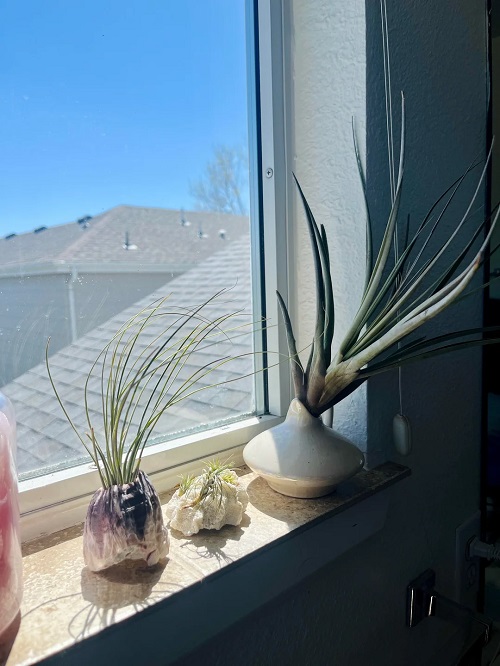
Since we know that air plants don’t grow in the traditional substrate like most plants, so in the absence of soil, they depend heavily on the remaining factors. One of them is just the right amount of sunlight.
Most air plants need bright, and indirect sunlight for at least 4-6 hours a day. In low light conditions, they become etiolated or leggy, and their leaves begin to droop or curl.
Fix
The solution is simple: just relocate the plant to a brighter spot. A south-facing window will do best, but if that is not a viable option, you can supplement natural sun with full-spectrum grow lights for 12 hours a day.
2. Underwatering is the Killer
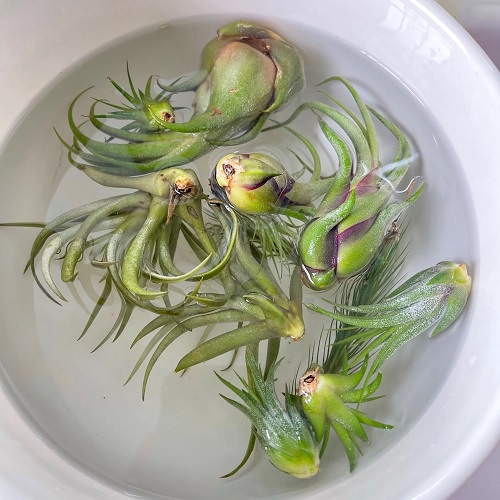
Did you know that air plants fulfill their water needs through trichomes on their leaves? And when they are deprived of a sufficient amount, they tend to dehydrate, curl, or twist.
This happens because the pressure within the plant cell, known as turgor pressure, reduces significantly, causing the leaf structure to collapse.
A quick test: Gently press a leaf. If it feels thinner and softer than usual, your plant is thirsty.
Fix
The technique of watering air plants is rather unusual. Instead of soaking the soil like in the case of a regular plant, you need to soak or mist the entire plant itself in water for about 20 minutes every week or so.
Note: Each air plant needs a different amount of water; therefore, you would need to do your homework for your specific variety.
3. Too Much Water is the Culprit
They say, too much of anything is poison! This stands true for air plants, which need to be quickly dried after the soaking process. If they are left submerged in water for prolonged periods of time, they may begin to rot, become mushy, and change shape, often curling, twisting, or becoming leggy.
Fix
You need to follow a procedure to ensure complete drying of the plant. Once you have soaked the plant for 20 minutes, hang it upside down to allow the excess water to drain out or evaporate.
Make sure this happens within 4 hours, as wetness that remains after that invites fungal infections and bacteria, too.
4. Nutrient Deficient Soil Conditions
Unlike most plants that absorb nutrients through their roots in the soil, air plants have special modifications on their leaves, previously mentioned as trichomes. Through these openings, they suck in moisture and dust particles in the air, which contain these dissolved nutrients.
However, in some cases, the air does not provide them with sufficient elements to maintain the structural integrity. The cell walls weaken, and therefore the plant begins to deform or curl.
Fix
Here’s when fertilizers or external supplements come to the rescue. While soaking your plant, you can add a bromeliad fertilizer diluted to half its strength. You can even mix it in the water you use to mist your plant. Over time, your plant will regain its strength and charm.
Note: Do this only once a month to avoid chemical burns.
5. Immediate Environmental Stress
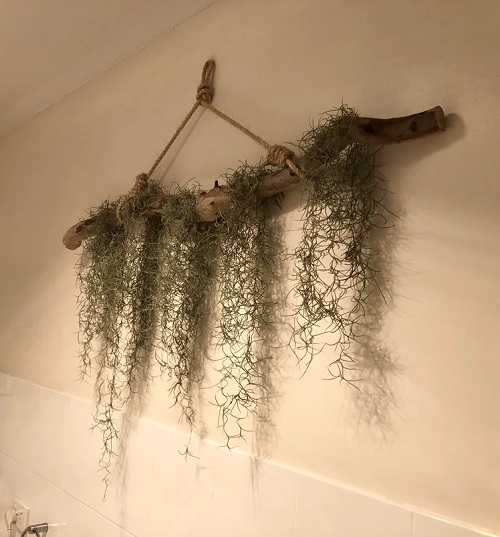
These survival instincts also mean that they may curl or twist their foliage to allow for more spread.
Fix
All you have to do is move the plant to a location where it has room to stretch out! Make sure there are no obstructions and all the other needs are also met here. Also, sudden changes can shock the plant so always relocate it gradually.
6. Lack of Humidity
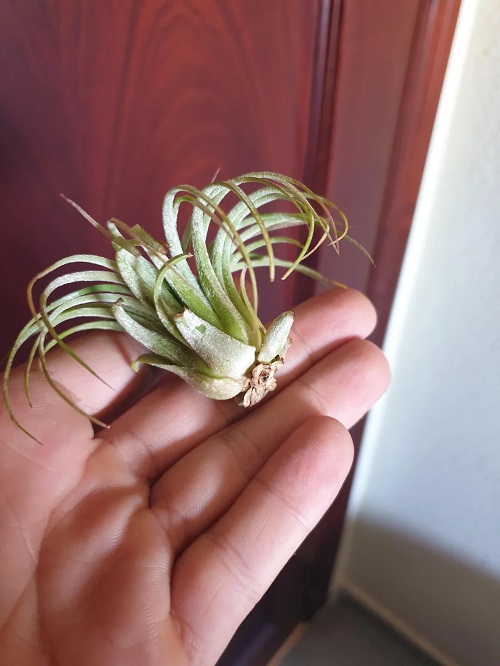
As mentioned before, humidity plays a crucial role in the survival and development of an air plant. A dry environment means that the air plant will not be able to get enough water intake or fulfill its nutrient needs.
Fix
If you notice the thinner, young leaves curling, you may need to increase your misting rate. Also, growing it in a room with cold drafts, ACs, or fireplaces is a big NO! Relocate the plant, increase the rate of misting, and if you must, use the help of instruments such as humidifiers.
7. Shock or Defence Mechanism
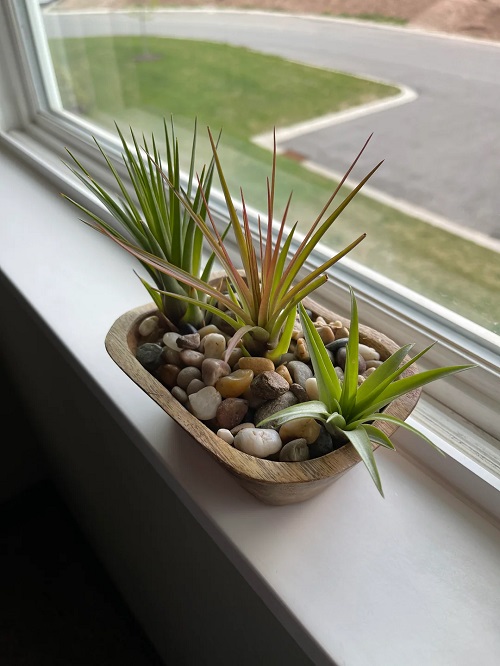
Air plants are also prone to shock, especially when relocated or exposed to drastic temperature fluctuations. This makes them temporarily change their shape and even twist or curl. They usually go back to normal once they acclimate to the new conditions.
Fix
It is always better to gradually acclimate your air plant to its new location or growing conditions rather than a complete change. Introducing the light, humidity and temperature factors in progressing levels is much better than stressing out the plant with a sudden switch.
8. Curl Naturally, Don’t Worry
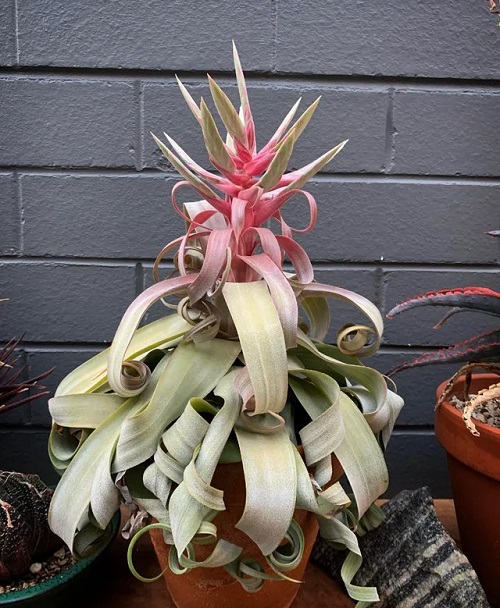
Finally, the last cause of panic. Just like all plants don’t have the same shape, size, and characteristics, air plants also vary. Some have naturally curling leaves. Tillandsia streptophylla is known for its inwardly curling leaves despite being at the peak of its health.
In this case, you need to educate yourself about your particular plant and continue to care for it as usual.
Fun fact: Some collectors actually prefer curly-leaf varieties for their decorative appeal—it’s not always a bad thing!
Have your air plants ever curled up in surprising ways? Share your experiences, challenges, and success stories in the comments—we’d love to hear how you’ve kept them happy and healthy!

